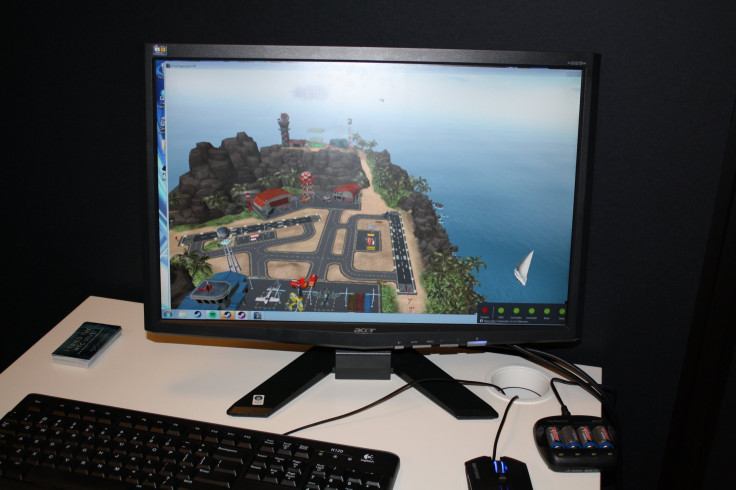Pax Prime 2015: HTC Vive VR Headset Prototype Review

SEATTLE -- Standing in an empty room of the Sheraton hotel, with big virtual reality goggles, headphones and a wireless controller in each hand, I felt pretty ridiculous. That is until the program booted up and the HTC Vive VR headset came to life around me.
The HTC Vive is a major competitor to the Samsung Gear VR, Oculus Rift and Microsoft Hololens headsets, with HTC planning to release the final product by the end of 2015.
The version I was trying is the developer prototype -- you put it on just like regular goggles and then use Velcro straps to tighten. This step is extremely important, as having it even a little bit loose can make you feel sick.
One thing that sets the HTC Vive apart from its competitors are the controllers -- it had just gone wireless. This did make the controllers a little bit finicky (the batteries in both died halfway through my demonstration), but they overall were easy to use. Each controller has a touchpad on the front for your thumb, and a trigger on the back, which you use as a control button.
While the wireless controllers are cool, what really made the HTC Vive special for me was the use of invisible lasers to determine where you are in the room. Not only does the equipment not use a camera, the two light house stations send out a timed laser sweep and communicate directly to the hardware through sensors, letting the headset and controllers figure out exactly where you are in the 3D space in a very short amount of time.

“We could have five people in here all with their own headset, and still just use the same two light house stations and it doesn’t degrade performance at all,” said my demonstrator, Kerry Davis from video game developer and distributer Valve Corporation. “Our precision is sub millimeter. We can track exactly where you are.”
Walking around the room trying not to run into walls was made easier by the built-in “chaperone system,” which tells you when you’re getting near the edge of your space by bringing up a blue grid all around you, a warning to stop where you are.
The actual demonstration started with blowing up balloons of different colors, then thumping them around the room with controllers. Next thing I knew I was deep underwater on the deck of a sunken ship, walking to the edge of the railing and watching the sea life swim around me -- it really felt like I was there, watching as a stingray swam overhead.
A game demonstration called “Final Approach” was third; similar to “Flight Control” you have to land the planes by guiding them to the runway using your controller -- or you can purposefully let them crash into each other as I did. A more practical software called “Tilt Brush” allowed me to paint whatever I wanted right in front of me, in 3D.

The last demonstration was a walk around the “DotA 2” secret shop. The detail was insane and the interaction with items in the room was a lot of fun. While each demo was only a few minutes long, it really showed me the endless possibilities that a headset like this presents.
“Games are just one piece that you can do with this,” said Davis. “You could practice assembling engines or stand in cities around the world in 3D.”
Another cool feature of the HTC Vive is the ability to save your experiences as files and share them with friends and family, so they can see exactly what you did.
The final consumer product is still being designed, with the model expected to have built-in headphones. The company hasn’t given a price for the hardware yet.
While the product does need a little bit of tweaking before release (such as the battery issue with the controllers), I have to say I was definitely impressed with where HTC is now.
© Copyright IBTimes 2024. All rights reserved.





















